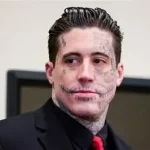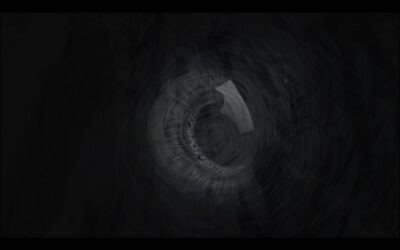Gather Round Your TV Sets, Kids
“You don’t really know much about Halloween.” – Conal Cochran
Oh, You Mean THAT Halloween Movie…
It’s the one without Michael Myers. It has nothing to do with the other movies. This one sucks. Right? Well you’re right on two counts. Halloween III: Season of the Witch does not have Michael Myers. It is not connected in any way to the Jamie Lee Curtis storyline started with the 1978 John Carpenter classic and most importantly, it was never meant to. Halloween III is as misunderstood as it is reviled with most of the hostility for the film attributed to the concept of Cynema.
“When the [ Halloween II ] script came in I thought it was…the anti-Halloween. All the things that Halloween did so well…had been tossed out the window…I understood that in the intervening time between the first movie and what was going to be the second movie that times had changed, audiences had changed…and maybe the dynamics of the movie and the amount of violence might be impacted by all that. I felt that John was betraying his own legacy. I held my breath and said “no.” …A director really needs to believe deeply in the material.” – Tommy Lee Wallace on turning down directing Halloween II
[U]pon being offered Halloween III, John [Carpenter] and Debra Hill told him [Wallace] that neither wanted to do the sequel as John hated Halloween II .
Halloween III is not a masterpiece but it is not Cynema. Michael Myers aka The Shape, returned to the franchise in 1988, six years after the failure of Halloween III in the retread, Halloween 4.
“I just went back to the basics of Halloween on Halloween 4 and it was the most successful.” – Moustapha Akaad, executive producer of the original Halloween series.
The Only Thing That Kills the Monster is Bad Boxoffice
Halloween II is a shining example of Cynema–a sequel for sequel’s sake that duped its fanbase into thinking it was getting something good for its devotion to the first film.
John Carpenter disavowed Halloween II, as did producer Debra Hill, but they knew there would be one regardless of their feelings. Wallace stated he declined the sequel even though all associated knew it would be a guaranteed boxoffice success. When Wallace vocalized creative concerns while considering directing Halloween II, he was told by Carpenter, in essence, to back off, as he was a “hire-ling (for lack of a better word)—a gun for hire as the sequel would require no creativity being a name brand product. Fans would return regardless.
The film would direct itself. Film critic James Bernardinelli corroborates Wallace and Carpenter while clearly illustrating Cynema in his scathing and dead on review for Halloween II:
“The main problem is the film’s underlying motivation. Halloween was a labor of love, made by people committed to creating the most suspenseful and compelling motion picture they could. Halloween II was impelled by the desire to make money. It was a postscript—and not a very good one—slapped together because a box office success was guaranteed.” – James Bernardinelli
The sequels after Halloween III are worse because of dedicated fans and blind allegiance to the franchise. They are dedicated without any critical thinking, just blind emotional fan devotion.
The sequels never came to the level of the original 1978 film (even the poorly written and executed H20. That film gets a free pass because they lured Jamie Lee Curtis back). They are of varying quality and represent Cynema for squeezing every last possible dime from the story line while cynically manipulating the audience into believing it is getting something better than it actually is.
“The plot of Halloween II absolutely depends, of course, on our old friend the Idiot Plot , which requires that everyone in the movie behave at all times like an idiot. That’s necessary because if anyone were to use common sense, the problem would be solved and the movie would be over.” — Roger Ebert
Halloween II was a financial success but its two main characters perished in a fiery conclusion, consequently concluding the story line and the franchise. John Carpenter and producer Debra Hill were approached for a third installment and they reluctantly agreed only if this were a whole new story line that did not include Michael.
Tommy Lee Wallace
Once again they turned to Tommy Lee Wallace with an offer to direct, and this time the idea of a whole new type of film caught his interest.
“What we had worked out was the idea that Halloween was going to become a yearly franchise. A new launch…so there was just endless possibility…year in and year out there would be a new theme.” – Tommy Lee Wallace, director
Wallace wanted something new, believing fans did as well and the road to Halloween III was paved with the best of intentions.
“The audience pays their money. They go in. Most people don’t read movie posters in any detail. All they’re thinking about is ‘Yeah! Halloween!’ And then it’s like ‘Well where’s Jamie Lee? Where’s the knife? Where’s The Shape [Michael Myers]?’” — Wallace in interview with Rabbit in Red
The plan was to do a whole new type of Halloween movie that would not include any of the elements from Halloween I and II. John Carpenter, a fan of British writer Nigel Kneale (most famous for his Professor Quartermass series) solicited a script from the acclaimed writer. The script by Wallace’s account was a heavy, dark story with little hope, focusing on a toymaker’s use of microchip technology to spread his evil. Wallace estimates about 60% of Kneale’s story made it into the final film. The remaining 40% divided equally between an uncredited Carpenter and himself.
“It wasn’t horror for horror’s sake. The main story had to do with deception. I hadn’t seen the first films but I knew enough about them to be put off the idea unless it was a brand new story…The theme was to be microchip witchcraft. In the old days in order for a witch to put a curse on you she had to make personal contact. With the advent of the microchip, a spell could be transferred through the Halloween gifts.” — Nigel Kneale, author of the original script for Halloween III. — Screenwriter Nigel Kneale on his initial involvement with Halloween III
Script To Screen
Neale was upset over producer Dino De Laurentiis’s insistence on blood and gore, and to keep the focus on violence from the first two films.
“I said to them, don’t you want some kind of suspense at the beginning?…’Oh no’ they said. ‘You must start in tearing heads off. We’ve got to keep faith with the kids.’ What they actually meant was to extract all the money out of the campus kids within the space of two weeks.” — Kneale to Starburst Magazine
Neale was forced to hand over his script to John Carpenter for a rewrite before it ended up with Wallace. Kneale subsequently removed his name from screen credit. There were no hard feelings, believing Wallace was also in a tough spot and was forced to bend to DeLaurnetiis and the studio’s demands.
“There was nothing he could do. He was driven to it…He’s a very intelligent man with a strong feeling for character.” — Nigel Kneale on Tommy Lee Wallace
Cynema is clearly at work in the premeditated plan for a “hit and run” release. In fear of losing a quick return on their investment the title Halloween III was deliberately used knowing it would make audiences believe it would be a direct sequel to the previous two installments. Wallace found Universal Studios efforts underwhelming in trying to get audiences ready for a totally new concept:
“A lot of things could have happened to set the table for that sort of thing [conditioning the audience for a new type of film]…All that was done by Universal to prepare the audience was this tiny little banner in the corner of the poster. And all it said was: ‘All New!’ like a toothpaste ad. ‘All New’, well what does that mean?” — Tommy Lee Wallace
Roll The Dice But hedge Your Bets
Universal played the odds, knowing a bulk of the audience would return simply because of the title Halloween III. Ten years before the Internet would change the way media would reach us, it would take a good two weeks for damaging word of mouth to get around: This film has nothing to do with Michael Myers, and by that time most of its business would be done and hopefully the product would return a profit, even if a small one. Wallace summed up what fans were thinking when buying a ticket:
“The audience pays their money. They go in. Most people don’t read movie posters in any detail. All they’re thinking about is ‘Yeah! Halloween!’ And then it’s like ‘Well where’s Jamie Lee? Where’s the knife? Where’s The Shape [Michael Meyers]?’” — Wallace in interview with Rabbit in Red
Universal pulled a “bait and switch.” Regardless of whose decision to put Halloween III over the title Season of the Witch the studio betrayed its own filmmakers.
FilmEdge.net’s assessment firmly backs up the Cynema that spoiled a truly interesting and fun horror film that could never be judged on its own merits.
This cynical switcheroo on behalf of the film’s creators and marketers sank HALLOWEEN III’s reputation and box office fortunes alone. Moviegoers in general rejected the ‘next’ entry in the supposed anthology of films as unexpected and unwanted, regardless of what merits HALLOWEEN III had or lacked on its own. — FilmEdge.net
Cynema has been defined in the conception of Halloween III but is the resulting film any good? The answer is a strong yes and it deserves to be looked at simply as Season of the Witch and removed from the context of the Halloween franchise completely.
“The producers, director and audience seem to agree: if HALLOWEEN III had been eliminated from the title, SEASON OF THE WITCH would have avoided the instant and fatal backlash it suffered upon release.” — FilmEdge.net
What Works About Halloween III (SPOILERS)
Dean Cundey: The production values are high with legendary Oscar nominated cinematographer Dean Cundey returning to give the film a similar look to the first two films, but a picture that defies its $2.5 million budget. It’s a widescreen, clean and atmospheric picture that betrays its low budget and elevates this film levels above similar horror films of its time.
Dan O’Herlihy: He would have made a great James Bond villain as well. O’Herlihy’s portrayal of Conal Cochran has just the right amount of gallows humor, corporate authority and pathos to project a truly evil man and one not to be messed with. His scene with Tom Atkins, giving background to his motives is delicious. O’Herlihy is absolute class.
Tom Atkins: He’s John Carpenter’s “Every Guy.” He is also one of the most underrated and solid character actors to smolder onscreen. In a Bizarro Jaws he would have made a great Chief Brody. Atkins is able to project genuine “world weariness” and when he says “I need a drink” you believe him. Atkins plays Dr. Chalis as a broken man trapped in suburban desperation.
Stacy Nelkin: She has just enough Scooby Doo-like wonder as the distraught daughter and enough grown woman to not be totally skeeved out by her and Atkins’s hook up.
Alan Howarth’s Score: There’s real menace here, and the opening titles, despite being 80’s computer graphic-laden sets the tone for the entire film. Howarth’s synthesizer score subtly works its way into the fabric of the film in ways far superior to Carpenter’s original Halloween theme.
The Silver Shamrock Jingle: Beloved by many, annoying to some, the ditty set to “London Bridge” works with Wallace’s soothing Kentucky voice glazing it into a trancelike piece.
The Way The Story Unfolds: It pulls you in and no doubt it pulled in audiences in 1982 as they kept waiting and waiting for Michael Myers to show. However the mystery does peel like an onion and we do want to know what the hell is going on inside the Silver Shamrock factory. The overall story is a great tip of the hat to “The Pod Movie” with “Them” trying to transform “Us.” We can identify with the damaged Dr. Chalis as he is pulled deeper into the mystery with genuine surprise at each revelation. This movie has great atmosphere and is genuinely creepy and fun with Jamie Lee Curtis providing the voice of the “Curfew Lady” and phone operator.
What Doesn’t Work About Halloween III
Androids: We know Cochran makes novelties and has an affinity for robotics, but how did he do it, how do they drive and are they all factory workers? And if so, why does he need the town of Santa Mira? Cochran praises his creations for their obedience but wouldn’t the residents be more loyal to Cochran if he employed them?
Why the curfews and totalitarian control of the town? It’s clear Cochran has been around the block and knows human nature. He would eventually know there would be rebels (aside from the foul mouthed wino) in this town. His 24 hour blanket surveillance with cameras all over the town add nothing to the story and seem like it would be one more thing he would have to deal with and he’s already so busy with his diabolical plot. However in light of a post 9-11 world, Wallace was prescient to say the least.
Cochran: What is he exactly? How old is he? What was his plan and what was he planning for the day after Halloween? Imagine the aftermath, the public outcry, the lawsuits and the manhunt for Cochran as undoubtedly the mass deaths would be connected with his masks. All we get is “the world is going to change tonight” and that explanation matches how he managed to smuggle a giant block from Stonehenge across the world and into his little factory. “We had a time getting it here! You wouldn’t believe how we did it,” he chortles to Chalis.
No, we probably wouldn’t.
Are people going to change because the demo we get of one of the masks bizarrely kills but hardly transforms anyone like the aliens in Invasion of the Body Snatchers. Did Cochran expect Chalis to escape? Why does he let Atkins do what he does at the end with the Shamrock labels and where are all his robot henchmen to stop it?
Cochran succumbs to the Roger Ebert “Curse of the Talking Villain” when instead of doing away with Chalis, reveals his lab and all the behind the scenes specs that give Chalis time to think of a way to disrupt it. Come to think of it, why not just stick him in the same viewing room with Buddy and his family instead of the easy escape room he inevitably escapes from?
The Masks: Just why are these masks so popular? What makes them so appealing to children in a sea of masks dedicated to Star Wars and other far more appealing pop icons? Why just three styles and if they are such a hot ticket item, why is the Silver Shamrock factory so run down with such a small staff? It’s clear the masks are a national phenomenon, but we never know exactly why. Why kill Buddy and his family? Cochran knows the masks work, why waste time or risk exposure with a “demonstration” to Chalis?
The Ending: Why is Ellie Grimbridge transformed? Why not just kill her and Chalis and be done with it? All of this time to set up his dastardly plan and he would risk these two to mess it up? When exactly was she transformed because she allows Chalis to mess the whole place up and wreck the lab room. Why didn’t she stop him as Cochran’s other mechanized employees tried? The final assault on Chalis in his car seems tacked on and why does Ellie decide to attack him then? Why does Chalis go back to sit in the car?
The attacking severed arm has no leverage and would not pose the problem it does in that scene. what should have been a tragic, sad moment for Chalis becomes unintentionally funny and overly cheesy and for some dragged out into a “Just end it!” moment. And…what happened to the real Ellie?
The film does make its full transformation into a B-movie in its final moments and in a way makes all of what was just listed all right. The film has the guts to end on an ambiguous, dark note, bucking the growing 80’s trend of happy, or tied up endings to satisfy the audience so they don’t have to think after the ending credits roll up.
I have to give credit to the filmmakers of part III for going back to the original concept and making something completely different, despite the fact that this entry is largely ignored by Halloween and horror film fans alike.
Cynema won as the film returned a small profit and Michael Myers was returned to quiet the angry masses in Halloween IV—and were lulled back into complacency and acceptance…much like the pod movie Halloween III emulates.
Listen to my Cynema podcast found on iTunes, YouTube, Stitcher, Spotify and iHeart Radio.

























